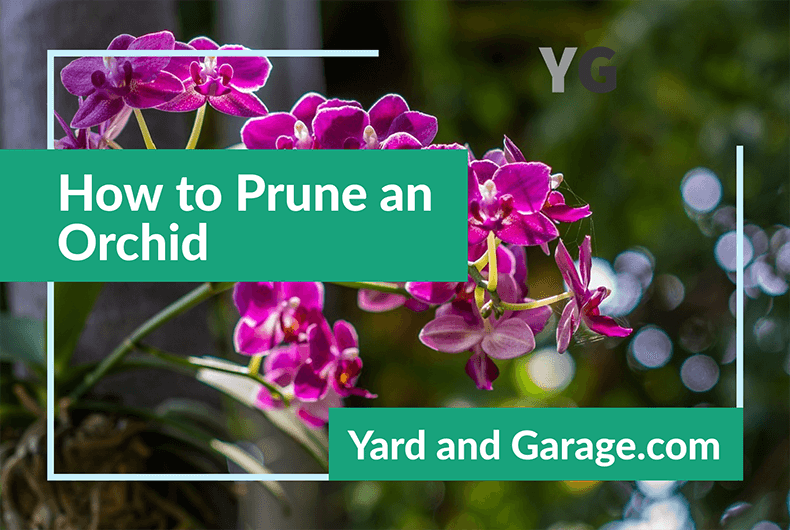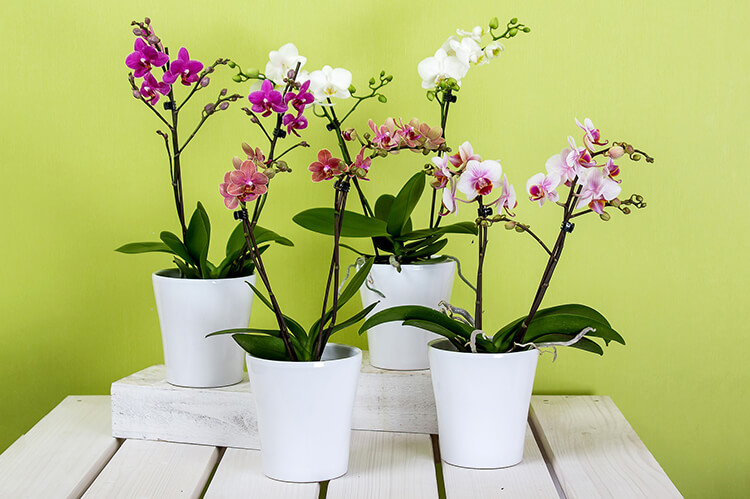
Orchids are a common flowering plant people tend to plant around their homes. They serve as home beautifiers for many and they tend to have amazing fragrances too. Some people just plant orchids because they enjoy the process of raising them.
To get the best out of your orchids, you need to be deliberate about taking care of them. One of the ways to take care of the orchid plant is by pruning them.
So, the question is; how do you prune an orchid? Read below to find out the best ways to prune your orchid.
Ways To Prune An Orchid
Below are some of the ways to get your orchid pruned.
Prune the Roots
Pruning of orchid roots is important for the survival of the orchid and only requires a little specialized technique. First thing you need to do is to get your shears. Once you have them in hand, you need to sterilize the pruning shears before you start anything.
Sterilizing the shears is quite easy as you can use alcohol to do this. Get strong alcohol or spirit and dip your pruning shears in it for some minutes. After dipping, take it out and open and close the blades several times to ensure that the alcohol reaches all part of the blade.
Next, leave the blades open to dry before starting your root pruning process. Now, you just can’t go about cutting the roots of the orchid. You need to cut the roots that are no longer benefiting the plant.
It is simple to recognize the dead roots to cut. The dead roots are always brown and they appear to be withering. These are the ones you should cut off. If the roots are grey and have strong features, then they are still healthy and you should not attempt to cut them off.
Note that the roots you should be pruning are those that appear to grow outside the orchid pot. However, you can confirm if the roots in the pot or soil are grey and healthy looking too.
Pruning Diseased Orchids
You can also prune the diseased part of the orchid. Sometimes, some part of the orchid will appear unhealthy, diseased or broken. You need to remove these sections to avoid a situation where the diseases spread. Besides, these damaged parts of the orchid tend to attract pests which is something you do not want.
Now, after cutting these parts from the orchid make sure you dispose of these parts. Never try to use the damaged leaves or orchid stems as compost. If you do this, you are giving the disease an avenue to spread all through your orchid plant. If this happens, you might end up killing your precious orchid.
Pruning When Re-potting

The next way to prune an orchid is when you are re-potting the orchid. In case you do not know what re-potting means, it simply means changing the pot of the orchid. This can be because of many reasons but in the vast majority of cases, it is simply because the orchid is outgrowing the pot. Now, just as we mentioned in the first point, you need to get your pruning shears sterilized first. You should also make sure the shears are sharp too.
Before placing the orchid in its new pot, prune away any dry looking, diseased and damaged roots. You can also cut some healthy roots off the orchid. This is to help in the growth of new healthy roots after you re-pot the orchid. Finally, since re-potting tends to cause a great deal of stress for the plant, you can also cut some of the orchid leaves to reduce the stress.
Prune Over-Grown Orchids
Orchids with overgrown leaves need to be pruned. Also, when orchids become leggy, too big or heavy, you need to prune them too. The reason for this is to ensure that the orchids become healthier. Another reason for this is to enable the orchid to grow in a healthy environment. All you have to do here is to cut the stems and overgrown leaves. However, there is a rule you need to adhere to. You should only cut overgrown orchids when they are healthy.
The healthy orchids will have green, shiny and firm leaves. On the other hand, unhealthy orchids will have dry, limp, brown or yellow leaves. When the leaves are unhealthy, cutting them might make the orchid struggle to survive or grow back.
That is why you have to wait until the orchids become healthier.
Leaf Pruning
Leaf pruning is also important for keeping the orchid in the right condition. If you find that the leaves of the orchid have become black, you need to cut them off immediately. This is because the darkening of the leaves might be caused by bacteria or fungi.
If you leave the diseased leaves on the orchid, the bacteria can spread through the whole orchid.
Worthy of note is that whenever you want to cut these affected leaves, make sure you use a sterilized knife or razor. You can always use spirits or alcohol to sterilize the knife.
Pruning Required For Different Types Of Orchids
There are different types of orchids and there are special ways to prune each of them. Here, we will be focusing on moth orchids (Phalaenopsis spp.) and cymbidium orchid (cymbidium spp.) We will tell you how to prune these two types of orchids below.
Moth Orchids

To prune moth orchids, you need to wait till the plant stops flowering. After the flowering is over, then you should start cutting any visible node you see. Also, make sure that for each part of the orchid or stem you prune, you should leave about 10 inches of stem without cutting. In other words, the stem should remain at least 10 inches high after each pruning exercise. Note that it will take this type of orchid a few weeks to replace its cut flowers.
Cymbidium Orchids
Our next focus is on Cymbidium orchids. You need to ignore the leaves of Cymbidium orchids after flowering. This is because this type of orchid produces nutrients for the next batch of flowers through their leaves. In light of this, pruning the leaves of Cymbidium orchids is not a very good idea when the orchid just finished flowering.
It is important to know the type of your orchid as this will determine how you prune them. However, in general, with most orchids, you can prune the stem to a 1-inch height. If you do this, your orchid will grow stronger and healthier leaves or flowers.
How To Take Care Of The Orchid After Pruning Them?
After learning how to prune orchids, it is only right you know how to care for them after pruning. We will be giving you tips on how to care for your orchids below.
Re-pot The Orchids
We talked about re-potting your orchids in some paragraphs above but we will be talking about them more now. You must change the pots of your orchids as the orchids will outgrow the pots someday. You should re-pot your orchid every two years. Also, you can re-pot the orchids when you find that the roots are already outgrowing the pots. Again, make sure the new pot is two or three sizes larger than your previous pot.
For example, if you are using a 10-inch pot, you should upgrade it to a 12 or 13-inch pot. The reason for this is that you do not want to use a pot you will have to change within the first few months. Worthy of note too is that the soil you use when re-potting should be specially made for orchids. The soil should easily drain water as this is what orchids need.
Water The Orchid
Next, you need to water the orchid at the right time. One mistake people make is to water orchids regularly. If you do that, you might end up killing the orchids. Only water orchids when the soil is dry. To ascertain if the soil is dry or not, you can stick your finger into the earth. If the soil feels moist, then you have no business in watering the soil. However, if the soil is dry, you can go on to water the soil. Again, make sure you do not pour too much water into the orchid pot.
Positioning Of The Orchid
Where you place the orchid is also very important. It is advisable to let the orchid face an east or west-facing window. This is to ensure that the orchid gets the needed sunlight to grow. However, note that too much of sun is not good for the orchid and the orchid could start to turn yellow if the sunlight is too much. Finally, the ideal color of orchid leaves is light green and this shows that the orchid is getting adequate sunlight.
—
Conclusion
Hopefully, you can see now that pruning an orchid is not a daunting task. We are confident that if you follow all our tips, your orchids will continue to thrive and beautify your home.



